by Elisa Zied | Oct 18, 2020 | books, writer, writers, writing
“This collection of poems and photos beautifully illustrates the complex emotions of living in New York during a global pandemic.” ~ Kelly Ripa, Entrepreneur, Host, Actress and Producer
Living in New York City during a global pandemic has been some combination of surreal, dispiriting, challenging and inspirational. While many of us have yet to fully process and make sense of what has transpired on our usually vibrant streets and in our parks over these last several months—especially in its early epicenter days—several artists have continued to create.
Nicole Freezer Rubens, a native New Yorker, owner of a boutique design firm, and mother of three, is one such artist. Through her dual passions—poetry and photography—she has beautifully and poignantly chronicled her personal experience during the pandemic and shown its impact on our beloved city in her gorgeous debut, “The Long Pause and The Short Breath” (Three Tomatoes Publishing, 2020).
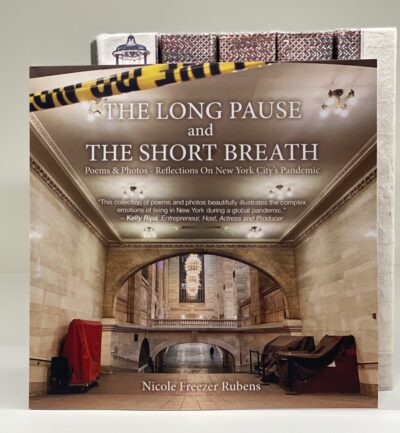 I had the pleasure of doing an Q & A with Nicole about her new book, one that gives readers a highly personal tour of the city during a moving and unforgettable time.
I had the pleasure of doing an Q & A with Nicole about her new book, one that gives readers a highly personal tour of the city during a moving and unforgettable time.
EZ: I’ve been enjoying your vibrant and gorgeous Instagram photos for years. What was it about the pandemic that made you take the plunge— not only to create a book of photos, but one that includes poetry too?
NFR: I have been writing poetry since I was 9 years old. Right after I read Shel Silverstein’s Where the Sidewalk Ends, I set out to create my first book of rhyming poems, bound in a denim blue loose leaf and including images and drawings. In college and after I studied poetry writing as well and throughout my life I have always written for myself. When the world shifted at the beginning of the global pandemic I was quite relieved that we were allowed to walk outside for exercise. Seeing our city empty out inspired me to write, often as I was walking in Central Park. With little else to do, I walked and explored a lot as a means to investigate and process what was happening. The poems began to accumulate after a few weeks. Not only did writing become therapeutic for me, but I began to feel a responsibility to myself to chronicle the events and repercussions of Covid-19 as a diaristic record for the future.
EZ: What was your process in taking and choosing photos specifically for the book, and how did you tackle the poetry (and do the photos pair with the poems or did you see them as separate if not related entities)?
NFR: I am generally a little obsessed with Instagram and love taking photos on my phone everywhere I go. Exploring new neighborhoods and photographing them is absolutely one of my favorite pastimes. When Covid prevented me from doing that, I began to take long walks to relatively local neighborhoods I had overlooked before. You ask an interesting question Elisa. The photos and poems were created as completely separate entities for me. Although they evolved simultaneously, I did not think to use them together until I realized that the poetry I had accumulated, was
becoming a body of work that could be a book. Once I finished writing I sat down to pair the poems with photos. This flowed naturally since they were captured to record the same subject matter of our city under lockdown.
EZ: So many writers and other artists have thrived during the pandemic, but many have also struggled (present company included). Did putting the book together help you cope and stay motivated during such tough times, or was it a struggle (or something in between)?
NFR: I have always had an easier time writing from the lows than from the highs. I have constantly used poetry writing as a coping mechanism. I realize as I write this, that that first binder of poems I wrote at nine, was written right after my parents got divorced. I am lucky because writing is a hobby, so I did not have the pressure to produce as so many artists do. I can say that on the days that I wrote a poem, I felt the satisfaction of productivity and that was personally rewarding and pushed me to continue to write. My interior design work was on hold for six months. My three grown children were home for three months, and cooking and cleaning occupied my days but did not satisfy me. I am very grateful that I was able to use some of my time on pause to create something long-lasting and that is important to me. It was not a struggle at all, it was more of a blessing for which I am grateful.
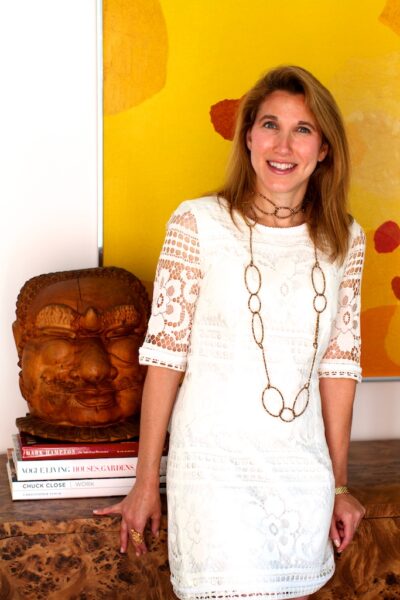 EZ: How would you sum up what you’ve experienced living in New York City during the pandemic, and what are some of the images or poems from the book that best encapsulate or capture the pandemic for you?
EZ: How would you sum up what you’ve experienced living in New York City during the pandemic, and what are some of the images or poems from the book that best encapsulate or capture the pandemic for you?
NFR: Overall, one of the most powerful aspects of being in NYC during the pandemic was bearing witness to the positive side of humanity. The Clap Because We Care round of cheering and applause that happened all over NYC at 7pm daily was always a bright spot in my day. Hearing, seeing and feeling the gratitude for and supporting the tireless healthcare workers and essential workers reminded me of the fundamental goodness in people and amplified my love for my city. Being able to scream for those two minutes, sandwiched between my family and neighborhood as we clapped, was a personal and helpful release. I also realized early on how fortunate I was in so many ways, including having bonus time together with my family. Although I felt frightened and deeply sad and frustrated, sharing that universal sense of loss with the world over made it easier to cope.
The cover image Off Limits of an empty Grand Central Station and You Are!! which shows a hand drawn heart-shaped message of strength taped to a lamppost truly define the times for me. Selecting a poem might be like picking a favorite child, but I can say that after I wrote March 30, 2020 about the field hospital being erected so unnaturally in Central Park, I felt I was on my way to having the writing soothe me.
EZ: What advice has helped you create in the face of a pandemic or grief or any kind or loss? (Or what advice would you offer to other artists?)
NFR: That is a very personal question, and each individual and creation is a unique situation which is what keeps artwork so interesting to me. I was always taught to write what you know, and the same applies to photography. I believe if one uses her voice, she will create from her truth and then it will certainly be meaningful and authentic.
The Long Pause and The Short Breath is available on Amazon or wherever books are sold. (If you don’t see it at your favorite independent bookstore or on their website, please request it.)
More about Nicole Freezer Rubens: She studied studio art, art history, creative writing and photography. Following a career in the art world, she launched NFR Consulting. Since childhood she’s written poetry and taken photos. Her favorite current pastime is exploring new neighborhoods and posting her treasured finds on Instagram. You can follow Nicole on Instagram at @nfrconsult.
by Elisa Zied | Sep 15, 2019 | books, fiction, writer, writers, writing, young adult books
Laura Taylor Namey is a woman on a mission. This dog loving, piano playing, former teacher is a mother of two and full time writer. She aspires to live in London someday, but right now is truly living the dream (and working her a** off) as the debut author of the brand new young adult novel, The Library of Lost Things (Inkyard Press, October 2019). Here’s a description of the novel from Goodreads:
From the moment she first learned to read, literary genius Darcy Wells has spent most of her time living in the worlds of her books. There, she can avoid the crushing reality of her mother’s hoarding and pretend her life is simply ordinary. But when a new property manager becomes more active in the upkeep of their apartment complex, the only home Darcy has ever known outside of her books suddenly hangs in the balance.
While Darcy is struggling to survive beneath the weight of her mother’s compulsive shopping, Asher Fleet, a former teen pilot with an unexpectedly shattered future, walks into the bookstore where she works…and straight into her heart. For the first time in her life, Darcy can’t seem to find the right words. Fairy tales are one thing, but real love makes her want to hide inside her carefully constructed ink-and-paper bomb shelter.
Still, after spending her whole life keeping people out, something about Asher makes Darcy want to open up. But securing her own happily-ever-after will mean she’ll need to stop hiding and start living her own truth—even if it’s messy.
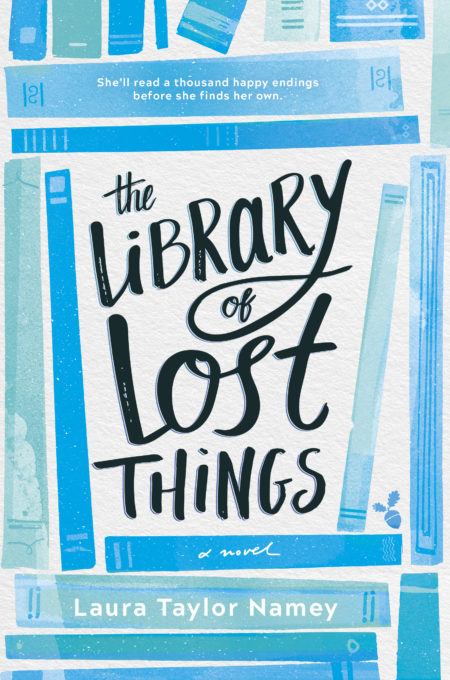 I had the pleasure of doing an email interview with my lovely friend whom I had the pleasure of meeting several years ago at a Society for Children’s Book Authors and Illustrators annual conference. Read on to learn about her writing journey and why she loves #pitchwars and her critique partners (not necessarily in that order).
I had the pleasure of doing an email interview with my lovely friend whom I had the pleasure of meeting several years ago at a Society for Children’s Book Authors and Illustrators annual conference. Read on to learn about her writing journey and why she loves #pitchwars and her critique partners (not necessarily in that order).
EZ: At what point in your life did you know you wanted to write for children and young adults? And when did you know you were a writer?
LTN: I have always felt like a natural writer, even if I didn’t have the logistics figured out until a few years ago. I am a former teacher, and I found myself using a lot of literature in my classroom lessons. I began to long for the chance to write my own stories. About five years ago, I started writing a young adult novel (this one will forever live in a drawer). I’d had no formal training, but I used that work to find out what I really did need to work on more. I got help, read a ton, and decided that I wanted to focus on the young adult age group. I love the emphasis on coming-of-age themes, high-concept storytelling, and exploring complex and relevant topics.
EZ: What has been the best part of transitioning from a pre-published to a published author?
LTN: I have such admiration and respect for career authors, and creators who consistently come up with beautiful and compelling content. Being able to take my small place beside them, with the word Published next to my name, is an incredible experience.
EZ: How do you fit writing into the rest of your life (and fit the rest of your life into your writing)?
LTN: I am blessed to have a supportive family, and the opportunity to write full time right now. I work best in the morning, so having a new teen driver in my home has helped to free up some of my time to build up my word count before lunch time. I take breaks to take care of my home and family, and to squeeze in a workout. Admittedly, I don’t watch a lot of TV. I am usually writing, or reading during down time.
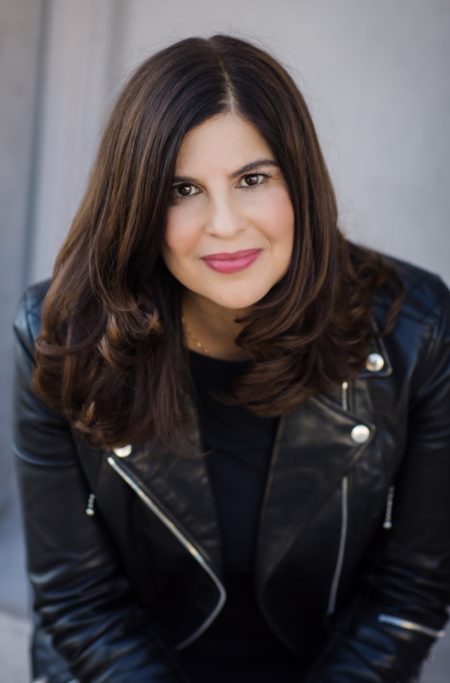 EZ: What are your favorite kinds of books to read, and how do they inspire your writing?
EZ: What are your favorite kinds of books to read, and how do they inspire your writing?
LTN: I love books that stick with me long after I’ve finished them. I enjoy a wide variety of authors, age groups, and genres. Make me care, feel, and want to chat about your book all day and that’s my idea of a winner. I believe all writers need to actively read other writers. I am most inspired by other authors in the areas of scope and opportunity. There are so many ways to attack and deconstruct even the same topic in drastically different ways with differing points of view. Reading more only confirms my belief that so many possibilities lay in front of our pens.
EZ: Can you describe your experience with #pitchwars on Twitter?
LTN: I was a 2017 #pitchwars unofficial mentee. Besides working with a fantastic mentor who became the first person to work on THE LIBRARY OF LOST THINGS, #pitchwars brought me into a supportive community of writers. This is the real prize in any online contest. Put your work out there. Meet fellow writers. Team up and share and hone your craft together, and know that you are not alone in your struggles and hopes.
EZ: You are a big fan of your critique partners. How did you meet them, and what makes your partnership work? What advice do you have for other writers who want to work with critique partners or groups?
LTN: I have two fantastic critique partners that work with me almost every day. We met because we were all 2017 #pitchwars unofficial mentees. We began chatting privately on Twitter DM, and became lifelong friends through sharing our work and supporting one another. What sets our group apart is that we don’t wait until we finish a novel to edit or weigh in. We are always working together on our three individual manuscripts. We plan together from idea-up, talk through issues, name towns or characters, and share snippets of our writing as we go. When I get stuck, I can ask a question directly from the point of concern. My partners already have such a deep knowledge of my manuscript, plot and theme, and character arcs, that they can weigh in quickly. And I do the same for their work.
For those who would like to join or form a group like this, hang out on private writer’s boards or the community groups associated with social media programs, such as #pitchwars. Put yourself out there. It might take some time, but you will find your people. It’s okay if you try out a CP and that person isn’t quite right for you. Keep sharing and investing in others.
How will you know if you are collaborating with the best people for you? Your perfect CPs will be similar enough to you and your work that they share a taste level and basic skill level. But they should be different enough that they can expand your scope and contribute to your growth. A good CP walks beside you, while also possessing the tools to push you. My CPs and I are the best of friends, but when it’s time to work, we give tough feedback with love.
EZ: What are you currently working on? And where do you see yourself in five years?
LTN: Right now I am almost finished with the draft of a secret junior novel. I’m hanging out in the young adult contemporary world for a while, and hope to have a few books side-by-side on shelves in five years.
To learn more about Laura Taylor Namey and The Library of Lost Things, visit her website. You can also find her on Twitter and on Instagram. Stay tuned for Namey’s sophomore novel, A Cuban Girl’s Guide to Sweaters and Stars (Simon & Schuster, Fall ’20) and future titles as well!
by Elisa Zied | Aug 6, 2018 | books, writing
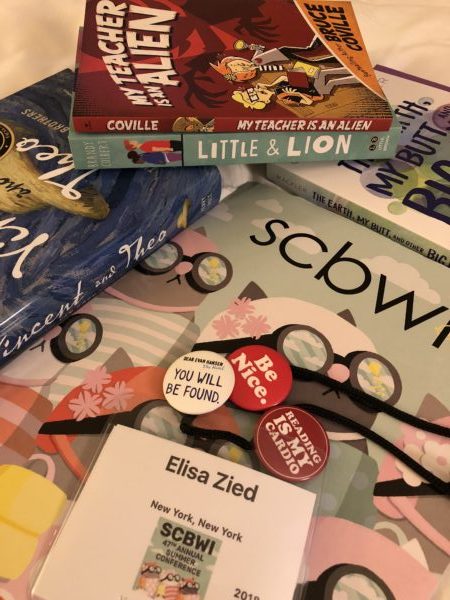 This weekend, I geeked out at the Society for Children’s Book Writers and Illustrators Summer Conference in Los Angeles, California. With homework and deadlines approaching, I was nervous about attending, wondering whether I could really afford to lose valuable study time. And of course I felt some Jewish mom guilt to leave my family less than a week after my 16-year-old returned from a summer program. Fortunately, I got a lot of reading and writing done on my 6-hour flight (with an additional hour on the runway). And while three full days of panels, workshops and keynotes with an amazing faculty of authors, agents and editors kept us busy, it was unbelievably inspiring and well worth every minute.
This weekend, I geeked out at the Society for Children’s Book Writers and Illustrators Summer Conference in Los Angeles, California. With homework and deadlines approaching, I was nervous about attending, wondering whether I could really afford to lose valuable study time. And of course I felt some Jewish mom guilt to leave my family less than a week after my 16-year-old returned from a summer program. Fortunately, I got a lot of reading and writing done on my 6-hour flight (with an additional hour on the runway). And while three full days of panels, workshops and keynotes with an amazing faculty of authors, agents and editors kept us busy, it was unbelievably inspiring and well worth every minute.
Besides making new friends, I spent quality time with a wonderful group of supportive and loving writer friends (several pictured below). I was also excited to see recent VCFA graduates and fellow students I had gotten to know—at least a little bit—during my recent grad school residency. Two even won awards—an Emerging Voices award for my fellow firstie at VCFA, Lakita Wilson, and a graduate award for recent VCFA grad Jessica Lee!) So, in many ways, coming to LA for this incredible conference felt like coming home.
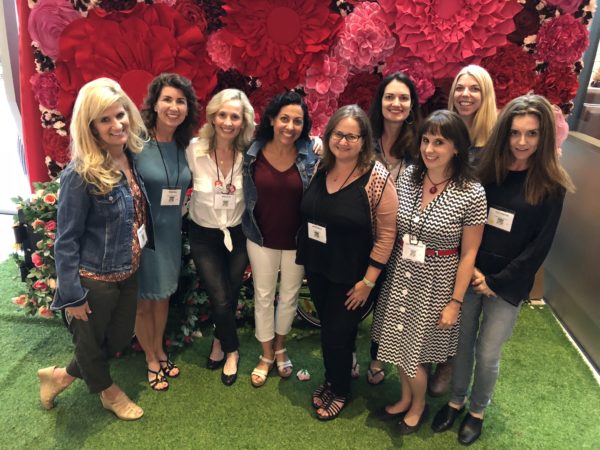
As always, I took full advantage of the conference, attending all but one keynote. The speakers were wonderful, especially Andrea Davis Pinkney and Brian Pinkney who put on a spirited and enjoyable show (such talent they both have), Libba Bray (a real writer’s writer), Lynda Mullaly Hunt and Bruce Coville (way to make me cry while touching and inspiring me), and Lois Lowry, the 81-years-young author of The Giver (pictured below while signing my book). I can’t wait to read her book about human connection set to launch in 2020.

There were so many highlights of the conference—too many to name. But I thought I’d share my top 10 takeaways list (in no particular order). I’m already thinking of when and how to incorporate many of these ideas into my writing/life, and invite my writer friends to do so as well.
10. Daniel Jose Older, author of Shadowshaper: The sound and rhythm of words matter. Read work aloud so you can hear it.
9. Elana K. Arnold, author of What Girls Are Made Of:
- Tension is the spinal cord of books. Increase tension by asking What if questions, play with time, add a ticking clock, and/or write your character into a corner that you don’t know how to get her out of.
- Think of ten scenes that are integral to your novel and write them. Write one sentence at a time.
8. Lynda Mullaly Hunt, author of Fish in a Tree:
- You pass by ideas every single day. When you feel emotion, jot it down (or talk into your phone about it).
- Write what you’re ashamed of…what you don’t want anyone to know, what you haven’t yet figured out.
7. Andrea Davis Pinkney, author of The Red Pencil: Meet hate with love. Every morning, spend some time thinking of things that make you happy. Then write.
6. Amanda Maciel, author of Tease: Who does your protagonist think she is, and what do other people think she is? What are the expectations placed on her? And who is she beyond those expectations? What’s important to her? Assess everything from her eyes.
5. Libba Bray, author of The Diviners: What is the purpose of your story, the spark that lights the fuse? What answer do you seek? The question is about growth…bringing us somewhere. Push aside vanity and the desire to be liked and write from a deep, vulnerable place. Do not think about how the story will be received.
4. Erin Entrada Kelly, author of Hello, Universe:
- We were never kids’ age in the age of technology. Don’t think about kids through the lens of your teen years. Use the emotions you felt in your childhood years, but learn and understand what their world looks like today.
- When revising, ask, “Why is this here? What is this scene/chapter/sentence doing here?
3. Eliza Wheeler, author/illustrator of Miss Maple’s Seeds:
- We confuse our identities with our work. The work is not us.
- The real goal in creating art is to love the process so much that you want to show up to do the work.
2. Bruce Coville, author of My Teacher is An Alien:
- Why do you want to write? Keep asking the whys. Then you’ll understand and it’ll inform your work.
- Small actions ripple the world and small gestures can be a turning point.
- Do not start writing books with a message. Start with your own good heart.
1. Here are just a few of the books I’m adding to my TBR list as a result of attending this conference:
- My Teacher is an Alien by Bruce Coville
- The Earth, My Butt, and Other Big Round Things by Carolyn Mackler
- Little and Lion by Brandy Colbert
- Vincent and Theo: The Van Gogh Brothers by Deborah Heiligman
- Out of Wonder: Poems Celebrating Poets by Kwame Alexander with Chris Colderley and Marjory Wentworth, illustrated by Ekua Holmes
If you attended the SCBWI Summer Conference, what were your takeaways?
To learn more about the conference—and about SCBWI, an organization I’m SO proud to be part of—visit the website here.
 I had the pleasure of doing an Q & A with Nicole about her new book, one that gives readers a highly personal tour of the city during a moving and unforgettable time.
I had the pleasure of doing an Q & A with Nicole about her new book, one that gives readers a highly personal tour of the city during a moving and unforgettable time. EZ: How would you sum up what you’ve experienced living in New York City during the pandemic, and what are some of the images or poems from the book that best encapsulate or capture the pandemic for you?
EZ: How would you sum up what you’ve experienced living in New York City during the pandemic, and what are some of the images or poems from the book that best encapsulate or capture the pandemic for you? I had the pleasure of doing an email interview with my lovely friend whom I had the pleasure of meeting several years ago at a
I had the pleasure of doing an email interview with my lovely friend whom I had the pleasure of meeting several years ago at a  EZ: What are your favorite kinds of books to read, and how do they inspire your writing?
EZ: What are your favorite kinds of books to read, and how do they inspire your writing? This weekend, I geeked out at the Society for Children’s Book Writers and Illustrators Summer Conference in Los Angeles, California. With homework and deadlines approaching, I was nervous about attending, wondering whether I could really afford to lose valuable study time. And of course I felt some Jewish mom guilt to leave my family less than a week after my 16-year-old returned from a summer program. Fortunately, I got a lot of reading and writing done on my 6-hour flight (with an additional hour on the runway). And while three full days of panels, workshops and keynotes with an amazing faculty of authors, agents and editors kept us busy, it was unbelievably inspiring and well worth every minute.
This weekend, I geeked out at the Society for Children’s Book Writers and Illustrators Summer Conference in Los Angeles, California. With homework and deadlines approaching, I was nervous about attending, wondering whether I could really afford to lose valuable study time. And of course I felt some Jewish mom guilt to leave my family less than a week after my 16-year-old returned from a summer program. Fortunately, I got a lot of reading and writing done on my 6-hour flight (with an additional hour on the runway). And while three full days of panels, workshops and keynotes with an amazing faculty of authors, agents and editors kept us busy, it was unbelievably inspiring and well worth every minute.

Recent Comments